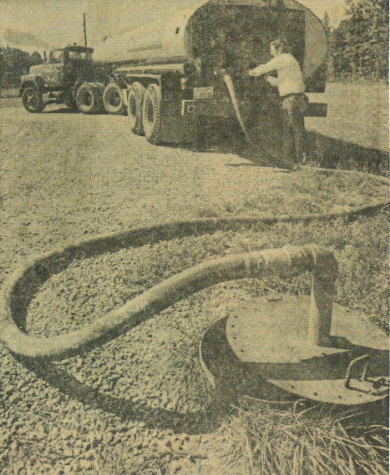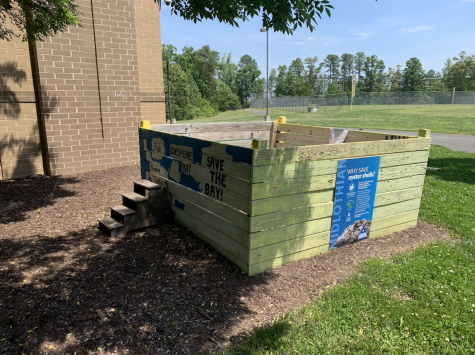Fifty years later: early problems on The Hill
Clover Hill High School in 1972 at its original location on Hull Street Rd.
In the early days of Clover Hill High School, there were a number of issues related to Chesterfield County’s rush to open the school as soon as possible to alleviate overcrowding at other schools.
One such issue was the septic tanks. On August 23, 1972, right before the school opened for the first time, Robert F. Kelly wrote in regard to the septic tank installed at Clover Hill, “A 100,000-gallon steel tank, buried near the northeast corner of the school site, is topped by a manhole,” Kelly said. “The tank is connected to an overflow pipe which links with an open overflow collection basin, where spillage would flow if for some reason the tank were to overflow. The tank has an automatic signaling device which triggers an alarm before the tank is full.”
Kelly’s position as superintendent was soon to come to an end. According to Richmond Times-Dispatch newspapers from the early 1970s, rumors that the board of supervisors pressured Kelly to resign were rampant and tensions between North and South Chesterfield were reaching a climax. The Northern, more population dense schools in Chesterfield were receiving disproportionately larger sums of money than the Southern schools.

The demand for a high school in western Chesterfield was immense as Grange Hall was forced to educate middle and high schoolers. The Sea Pines Company lobbied heavily for new schools in the area to support their coming population for the Brandermill housing development.
Because of this pressure, Clover Hill’s opening was rushed, which created issues such as the faulty septic system. Sea Pines was in the process of installing a sewage system in Brandermill, and Chesterfield County Public Schools would face the same challenge. For the first two years of its operation, Clover Hill did not have working sewage. A temporary solution in the form of a septic tank was installed instead. Septic trucks would go between Clover Hill High School and Pocoshock Creek three times a day to drain it. This solution cost approximately $233,800 a year in today’s US dollars.
According to practical arts teacher William O’Hare, septic tank maintenance did not always go to plan.
“They were cleaning some stuff out at one time and some kinda back pressure actually blew some sewage into the field house,” O’Hare said.
O’Hare attended Clover Hill in the early 1980s.
“It was a smaller community and everyone in the area went there,” O’Hare said. “Pretty much everything we did was through the school.”
O’Hare thinks that the rural school reputation of Clover Hill contrasts its status today.
“It’s evolved, Brandermill changed the demographic because you had more people from the outer area moving in,” O’Hare said. “Back when I was there, we had a lot of room, it wasn’t crowded.”
O’Hare’s graduating class was 180 students. This would increase as the county built more developments in Western Chesterfield, necessitating the construction of Cosby High School in 2006 and the new Clover Hill building in 2010.
Clover Hill High School acts as an analog for the changes that the whole of Chesterfield County has experienced over the past fifty years as it grew in population.

Jackson Bechtold’s interests lie primarily in graphic design and English. He’s a senior currently involved with the library, the film club, and this...












